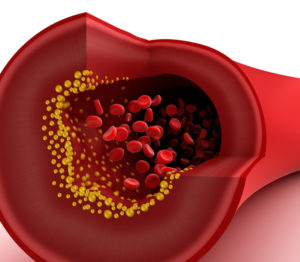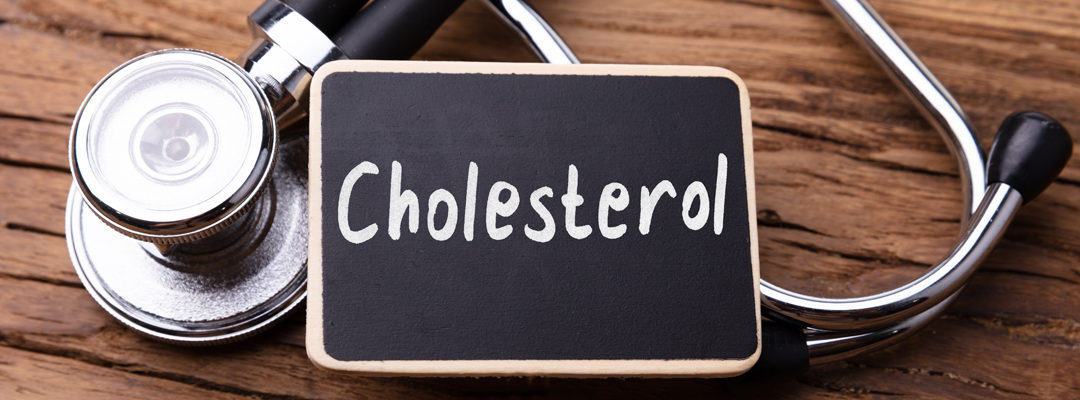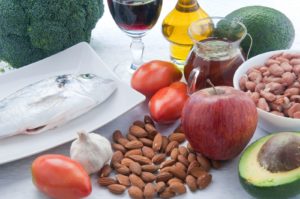Here’s the expert-backed info you should know to keep your heart happy and healthy.
Be it a visit to your doctor, family reunions with the grandparents, or the ubiquitous pharmaceutical commercials, we hear a lot about cholesterol. We are told that our time spent on the saddle is important not just for heart health, but also for keeping cholesterol under control. But what exactly is cholesterol, and what are the different types?
“Cholesterol is a waxy, fat-like substance made by your body and found in animal-based foods that is used for a number of vital functions such as serving as the building block for hormones, helping form the structure of cells, and producing vitamin D,” explains Joyce Oen-Hsiao, M.D., director of clinical cardiology for Yale Medicine.
So clearly the body needs some cholesterol to function, but Oen-Hsiao points out that when levels get too high, deposits can accumulate in your blood vessels leading to health concerns–yes, even for us fit runners. Here are the guises of cholesterol you need to know about and the steps you can take to make sure to keep levels in your favor.
Types of Cholesterol
Inside you, cholesterol is a passenger on proteins called “lipoproteins,” which serve as a bicycle courier for cholesterol so it can travel from one zip code in your body to the next. There are two main types of lipoproteins, and the differences between “good” and “bad” cholesterol are important to understand.
LDL Cholesterol
Low-density lipoprotein cholesterol (LDL) is not-so-kindly referred to as “bad” cholesterol because is it the type that deposits onto the arteries. “These cholesterol deposits can build up over time and cause potential blockages,” says Oen-Hsiao. She then goes on to add that plaque build-up can lead to increased risk for heart attack and stroke by reducing blood flow. The lower your LDL cholesterol number, the lower your risk. A good goal to shoot for is less than 130 mg/dL if you don’t already have atherosclerotic disease or diabetes. Keep in mind that LDL cholesterol levels tend to increase with age, which is why it’s best to keep tabs on levels with fairly frequent blood tests as the decades roll by.
LDL has a trouble-making sidekick called lipoprotein(a), or Lp(a), which appears to really love sticking to our artery walls. Healthy behaviors like eating a nutritious diet appear to have little impact on Lp(a), meaning that it is largely controlled by genetic factors. So you can blame your parents if this guise of LDL is a problem for you.

VLDL Cholesterol
Very low-density lipoprotein (VLDL) is another type of concerning lipoprotein produced by the liver and released into the blood. Oen-Hsiao explains that the main difference between VLDL and LDL is that they are made up of different percentages of the cholesterol, protein, and triglycerides—a form of fat in foods. “VLDL transports more triglycerides, whereas LDL contains more cholesterol,” she says. So if you eat too many fatty meals it gets absorbed as triglycerides, which can lead to a spike in VLDL.
As with LDL, too much VLDL can be bad news for your ticker. While the triglycerides carried by VLDL are used by cells in the body to generate energy, including what you use to power your pedal stroke, Oen-Hsiao says too much can also lead to the build-up of hard deposits (plaque) in your arteries. “VLDL eventually gets transformed into LDL, so the more VLDL particles in the body, the more LDL the body can make,” Oen-Hsiao adds. There is no simple, direct way to measure your VLDL cholesterol numbers, which is why it’s normally not mentioned during a routine cholesterol screening.
HDL Cholesterol
High-density lipoprotein cholesterol (HDL) is consider “good” cholesterol because Oen-Hsiao says it shuttles cholesterol back to the liver which then flushes it from the body and, in doing so, keeps it from building up as plaque in your arteries. So, as with tailwinds, higher levels of HDL cholesterol are desired since it will slash your risk for cardiovascular disease, and doctors will say that a good goal to aim for is 60 mg/dL or higher.
With all this said, what you need to know is that the numbers by themselves are not enough to predict your risk for heart woes. They are, instead, one part of a larger equation that includes many other factors including age, smoking status, and stress. “If a person has elevated cholesterol levels, they can try lifestyle changes for three to six months before having their cholesterol levels checked again,” advises Oen-Hsia.
How to Keep Your Cholesterol in Check
There are two important ways you can work to keep your cholesterol levels in the healthy range giving you a better chance to ride well into your golden years without needing to pop a daily statin.
Eat Well
A study published in JAMA found that a diet that emphasizes known cholesterol-lowering foods brought about a greater drop in LDL numbers than a diet geared toward simply reducing saturated fat intake. While there isn’t one uberfood that can drastically improve your good-to-bad cholesterol ratio and help you sidestep the coronary issues, there are certain eating patterns that can pay off big time. These include:
- Beans
If cholesterol could speak to soluble fiber, it would say: “Screw you.” That’s because Hailey Crean, R.D., Certified Specialist in Obesity and Weight Management, and founder of Hailey Crean Nutrition, says that soluble fiber binds to bile salts in the digestive tract and ushers them out of the body. “Since bile is made from cholesterol in the liver removing more of it from the body also ultimately results in less cholesterol in circulation.”
Beans and lentils are leading sources of cholesterol-crushing soluble fiber and research shows that noshing on them regularly can help send levels of LDL cholesterol (the “bad” kind) crashing down. Other sources of soluble fiber include oats, barley, flaxseed, chia seeds, and certain fruits such as apples and citrus.
- Fat
It sounds counterintuitive but eating fat can help keep your cholesterol numbers in check—the right fats, that is. It’s now known that the long-chain omega-3 fatty acids found in fatty fish like salmon, sardines, and mackerel can help reduce triglyceride numbers, which manifests itself as a drop in VLDL levels and a big reason why these mega-healthy fats are considered especially good for your heart. It seems that these fats increase the delivery of triglycerides to the liver for removal from the body.
Crean also focuses on monounsaturated fat (MUFA) as another fat that is a cholesterol crusher. Research indicates that eating more MUFA at the expense of saturated fat can improve our HDL-to-LDL ratio for better heart health. Harvard researchers found that among nearly 130,000 people, those who replaced 5 percent of the daily calories they ate from saturated fat with calories from MUFA benefited from a 15 percent lower risk for heart disease. “Excellent sources of MUFA include olive oil, avocado, and nuts like almonds,” says Crean.
A review of research published in the journal Nutrients found that there is enough evidence to say that adding MUFA-rich hazelnuts to a diet can aid in slashing LDL cholesterol numbers. While another research review showed that eating MUFA-packed avocados can chip away at total cholesterol, LDL cholesterol, and triglyceride levels making the popular food especially ticker-friendly.
- Berries
Here’s more science to take to heart: A higher consumption of anthocyanins, antioxidants found in fruits including blueberries, blackberries, dark grapes, and cherries, have been found to boost HDL cholesterol numbers while simultaneously trimming LDL numbers. It appears that anthocyanins reduce the activity of CETP, a protein that transfers cholesterol from HDL to LDL molecules, which is not what your heart wants.
- Plant Proteins
To keep heart disease at bay, consider implementing meatless Mondays. When researchers from Harvard T.H. Chan School of Public Health and Purdue University analyzed the diets of 1,800 individuals, they found that higher intakes of plant proteins such as tofu, beans, lentils, and seeds resulted in lower levels of both total and LDL (“bad”) cholesterol compared to diets that included more red meat. More generous intakes of red meat were linked to higher levels of triglycerides, which can drive up the amount of VLDL moving around in the body.
“As for eating more plant-based proteins in place of red meat, this benefit can be two fold,” says Crean. “Plant-based proteins are naturally lower in saturated fat and diets high in saturated fat like that found in red meat can increase LDL cholesterol.” She adds that eating more plant proteins also comes with the added benefit of being higher in fiber, which we know can help lower cholesterol. A Mediterranean-style diet that emphasizes plant-based foods with smaller allowances for meat than the typical American diet is a good place to start.
- Low Sugar
It’s okay to fuel your big runs with sugary gels and chews, but your overall diet should be light in added sugars. When you flood your system with simple sugar (glucose) some is used to generate energy, but Crean cautions that the excess is used to make triglycerides, which can raise your risk for heart disease and insulin resistance, a contributing factor to diabetes. The best way to lower your VLDL levels is to lower your triglycerides, and slashing the added sugar in your diet is a good first step.
[Build a killer midsection in the kitchen for effortless miles on the road with Eat for Abs!]
Exercise Often
Good news: You can run your way to tackling your cholesterol head-on. An investigation in the American Heart Journal found that independent of diet, regular exercise can have beneficial effects on LDL and HDL numbers, LDL size (smaller, denser LDL particle size is more predictive of heart disease) and triglycerides. A big reason why regular sweat sessions can improve cholesterol numbers is because it keeps your body weight in check: Overweight people tend to have worse levels of cholesterol and triglycerides.
But be sure to work some intervals into your training program as research shows HIIT exercise can be especially helpful in improving cholesterol levels. Plus, consider picking up the dumbbells few times a week since resistance training, which improve our muscle-to-fat ratio, is also part of the workout equation to healthier cholesterol numbers in both men and women .
A true love for sports




Recent Comments